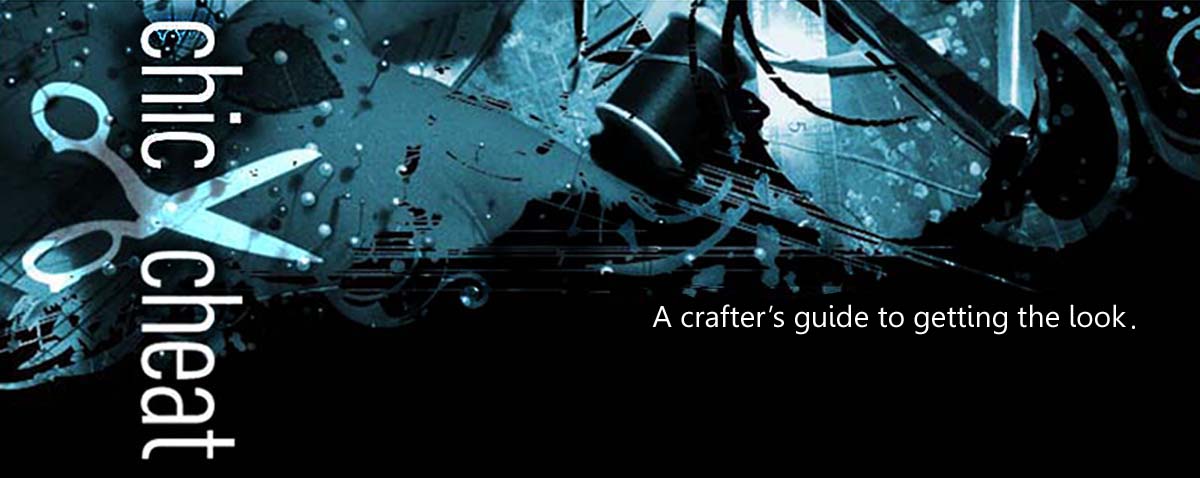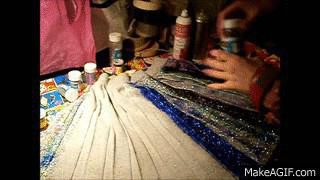I'll publish the tutorial in full soon but just to keep you up to date on the things I've got up to - in a way that doesn't involve vapid numeric brags about my recent gym performance - I thought I'd share some pictures of my Laurence Dacade-inspired suedette boots with floral embroidery; rather than subject myself to hours of painstaking labour, I attached some embroidered fabric, using fusible fabric glue and hand-stitching along the edges.
Monday 26 January 2015
Monday 19 January 2015
Smocking Hot - How to do smocking by hand
Owing to this week's schedule and external pressures, I've decided to take it easy and go off the beaten track as far as on-trend pastiche-come-plagiarism is concerned. In amongst the hustle and bustle of the weekend, and the rigours that came with it, I decided to turn my hand to smocking.
NB: The top or garment needs to made from synthetic fabric or it can't be moulded; natural fabrics, such as cotton, have too high a melting point and don't behave in a heat-malleable way.
Pins need to be as narrow as possible; ideally, you should avoid pins with round or wide heads.
Concertina-fold the fabric , lengthways, along the middle of the top, or wherever else you want your smocking to be. Pin it in place and iron the pleats on as high a setting as possible - your aim is to get the plastic to change shape through heat without melting it. I would recommend working up to the highest temperature you can and practising on some scrap fabric, if possible. You can also heat-set some synthetic fabrics by boiling them in water for a short while - sorry I couldn't be more helpful with timings but it's been a while since I last attempted that particular method!
After you have fixed the pleats, unpin them and pin the tips of the pleats together at alternating intervals to make diamond patterns. Hand-stitch or glue the tips together and unpin them. Since I was doing my design lengthways, I didn't do diamond shapes completely along the pleats, ; I stopped about a third of the way down, and would recommend you do the same, so that it fits more easily.
You will need...
NB: The top or garment needs to made from synthetic fabric or it can't be moulded; natural fabrics, such as cotton, have too high a melting point and don't behave in a heat-malleable way.
Pins need to be as narrow as possible; ideally, you should avoid pins with round or wide heads.
Difficulty
Quite easy
I fear I might be jumping the gun in assuming that it's a complete doddle, since there is a smattering of technique involved. It helps to be good with your hands and especially dexterous with your fingers. Confused? All will be revealed.Time
This wasn't as quick as I expected - I'm not entirely sure if that was down to perfectionism or being distracted by the television, which I like to have on in the background - but if you do the design I did it shouldn't take more than a couple of hours.Smock treatment
Concertina-fold the fabric , lengthways, along the middle of the top, or wherever else you want your smocking to be. Pin it in place and iron the pleats on as high a setting as possible - your aim is to get the plastic to change shape through heat without melting it. I would recommend working up to the highest temperature you can and practising on some scrap fabric, if possible. You can also heat-set some synthetic fabrics by boiling them in water for a short while - sorry I couldn't be more helpful with timings but it's been a while since I last attempted that particular method!
After you have fixed the pleats, unpin them and pin the tips of the pleats together at alternating intervals to make diamond patterns. Hand-stitch or glue the tips together and unpin them. Since I was doing my design lengthways, I didn't do diamond shapes completely along the pleats, ; I stopped about a third of the way down, and would recommend you do the same, so that it fits more easily.
Monday 12 January 2015
Haute Fluff - How to DIY a Shrimps faux fur jacket

Faux fur is more than just a bit of fluff this season.
Although an early 2014 street style staple, Shrimps' statement stripy fur jackets are still riding high with the faux fur trend. The label's distinctive stripes are a sure-fire statement piece for brightening up any outfit in the winter gloom - and every bit as easy to DIY.
You will need...
Sourcing tip: Shop around on eBay for the best deals on faux fur coats and comb your local flea market for the fur.
NB: You can also use fabric glue if you're not keen to get messy.
Difficulty
Very easy
Measuring and cutting in straight lines is the biggest challenge you're likely to come across here and while they're not quite as easy to get perfect as they look, they don't require any skill, just a steady hand.Time
A few hours, at most.Fancy a shag?
Use your patternmaster to measure a parallel line 4cm from the edge of your jacket and cut the fur along the line with your scissors. Measure and cut a line 2cm above the previous one and trim down the fur between the two lines as far as you can. Repeat the process by making a line 2cm wide and 3cm above the last one.
Cut two flat lines with the same spacing and width starting 4cm from the cuffs. The flat lines should look something like these:
Measure the circumference of your cuffs and the hem of your jacket. Cut four pieces for the cuffs and two for the hem; each piece should be long enough to cover the relevant circumference and 2cm wide.
Measure the circumference of your cuffs and the hem of your jacket. Cut four pieces for the cuffs and two for the hem; each piece should be long enough to cover the relevant circumference and 2cm wide.
Glue the faux fur pieces inside the flat, trimmed areas.
Thursday 8 January 2015
#TBT - A Festive Return
Now that Christmas is nearly two weeks in the past (perchance a lifetime, in real terms, as far as evangelists of the new year detox regime would have us think) I thought I'd share my experience visually in flashback form. Technically, anything in the past qualifies for casual celebratory flashback material, doesn't it, even if it's not quite the timeframe that, say, James Laver might deem noteworthy? For this entry, I will take an affirmative view of that statement to recall the tranquil, indulgent idyll of the two weeks spent at my parents' house in Kenilworth - a place I like to call the vintage pearl of the English Midlands, with its opulently historical architecture and centuries-old landmarks - surely that's a throwback of sorts?













Sunday 4 January 2015
Glitter-arty - How to DIY a Marco de Vincenzo metallic pleated skirt
The very now way to wear holographics.
If this project seems a little late to the party, it's because I intended it to be a pre-new year's eve entry as a last-minute DIY fashion idea. Sadly I was away from home - and therefore some 99.9% of my DIY paraphernalia - and then, to cap it all, who knew that two weeks' free board and lodging courtesy of parents came with conditions of cleanliness attached (and that fine glitter particles are one among many noxious substances that get trodden into carpeting, causing irreversible ruination, if they're not dealt with within seconds of spillage)? Nonetheless, now that I'm back in the Zen calm of home, away from distractions, I figured it would be my last chance to take on the glittering, graduating trend of holographics 2014-style (late 2014, obviously; should it really look that bad to drop a time from four days in the past?) so I took on the Taylor Swift-endorsed Marco de Vincenzo metallic pleated skirt.
You will need
NB: Use fine glitter for an authentic lamé effect.
You might need more than one can of craft mount to cover the whole skirt. I'd recommend using Crafter's Companion Stick and Stay Mounting Adhesive.
I would also recommend using a fixative after applying the glitter to avoid 'molting.'
Difficulty

Very easy
As a quick disclaimer, I'm referring specifically to the method. It's as quick, easy and satisfying to make as they come. However, keeping the area clean is significantly more of a challenge and tailor-made for those who like vacuuming.
Time
About an hour per side.
Get your glitter on
Spread the pleats out as flat as you can; I would recommend doing them one by one. Cover each pleat in craft mount and sprinkle some glitter on top of it. In order to stop it from gushing out, hold the glitter shaker on its side and tap it with your fingers:
After you've covered all the pleats, sprinkle some silver glitter onto the waistband.
Front
Back
Subscribe to:
Posts (Atom)

























